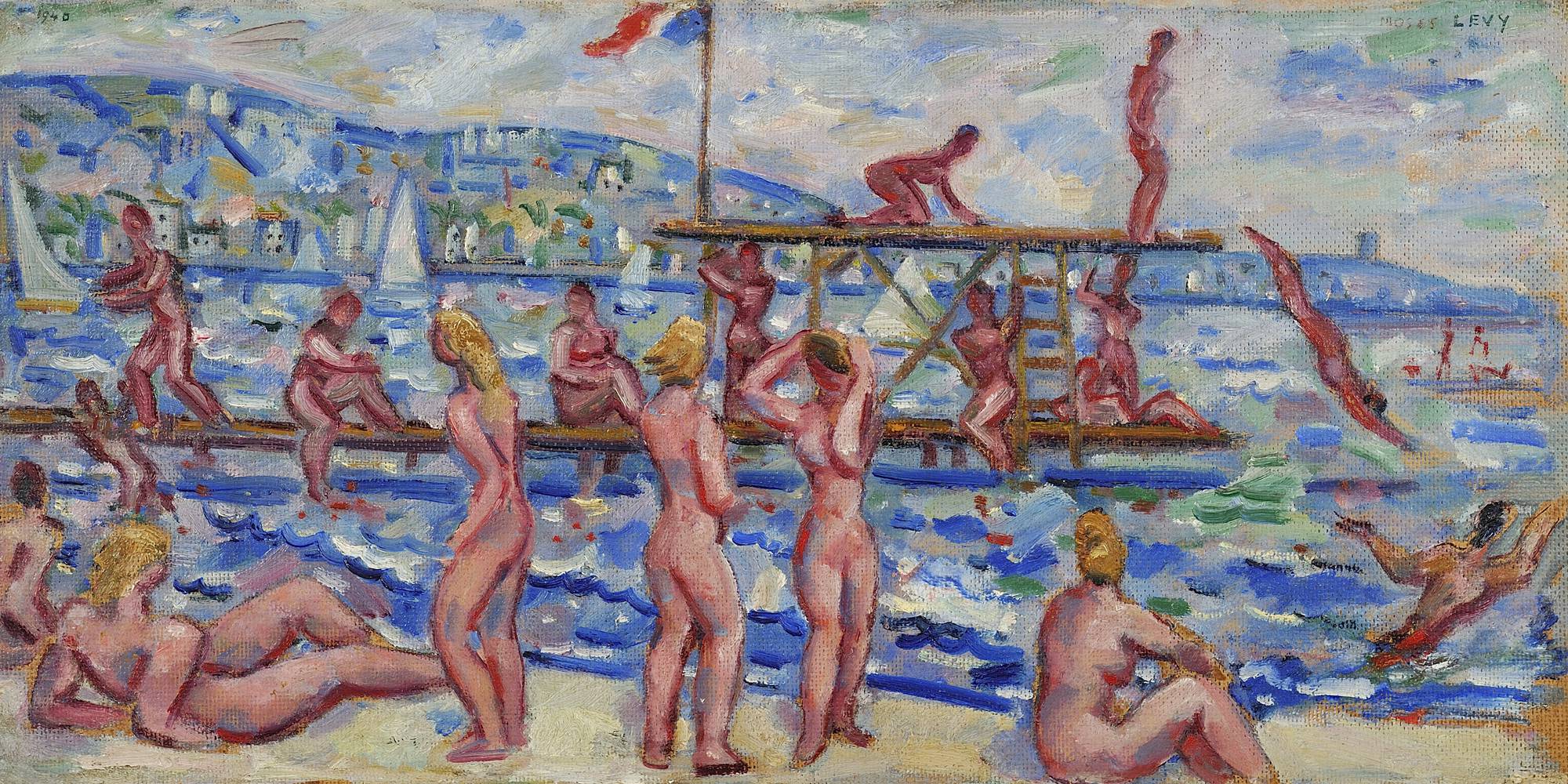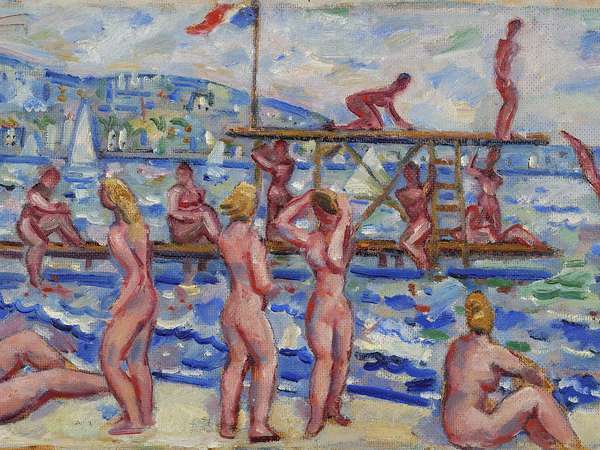Moses Levy
Moses Levy was born in Tunis in 1885 to a British father from Gibraltar and an Italian mother. He was raised in an environment combining Western, Arab and Jewish cultures. Levy arrived in Italy with his family in 1895. Levy received artistic training from an early age, and when he was only fifteen, he attended the Lucca Institute of Art. Three years later, he studied at the Academy of Fine Arts in Florence
In 1907, he exhibited the harvest of olives at the VII Biennale of Venice, which marked the beginning of his notoriety. Upon his father’s death in 1908, he returned to Tunis with his mother, although he returned regularly to Rigoli, Italy. He enrolled in “The School Free Naked” in Florence, and then move to Viareggio in 1917, where he opened a small studio and painted many landscapes, including the beach of Viareggio, one of the flagship themes of the artist. In 1928, he settled in Montparnasse, Paris. From then on, he would be continuously travelling back and forth between Tunis, Viareggio and Paris. But it was in Tunis that he would eventually organise his first personal exhibition at the Galerie Canto-Durrieu.
He continued to travel frequently between the northern and southern shores of the Mediterranean He became friends with Pierre Boucherle, Jules Lellouche and Antonio Corpora, who would become his partners in 1949, during the creation of the “School of Tunis”. He held solo exhibitions in Florence, Milan, Lucca, Pisa, Livorno, Viareggio and Tunis from 1923 to 1957. In 1963, his work was presented in New York at the Parker Exhibition of Contemporary Italian Painting. He died in 1968 at his home in Viareggio, Italy. His son is the Tunisian-based painter Nello Levy.

